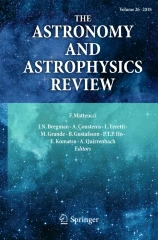


An abstract summarizes, usually in one paragraph of 300 words or less, the major aspects of the entire paper.
Parts usually include:
1) the overall purpose of the study and the research problem(s)
2) the basic design of the study
3) major findings or trends found as a result of the analysis
4) a brief summary of the interpretations and conclusions.
This article can be found at
Carlo, G., McGinley, M., Hayes, R., Batenhorst, C., & Wilkinson, J. (2007). Parenting styles or practices? parenting, sympathy, and prosocial behaviors among adolescents. The Journal of Genetic Psychology, 168(2), 147-76. Retrieved from https://proxy154.nclive.org/login?url=https://search.proquest.com/docview/228539106?accountid=13601

The Introduction begins after the Abstract. In this case, the Introduction also refers to other studies in the research area and serves as a Review of the Literature.
The methods section will describe the research design and methodology used to complete to the study. The general rule of thumb is that readers should be provided with enough detail to replicate the study.
You will find information about



The Author Notes can be at the end or the very beginning of the article, either before or after the Abstract.
